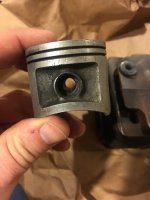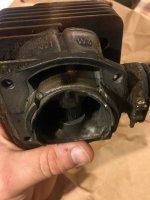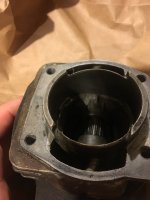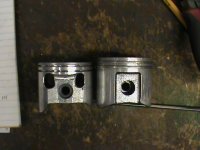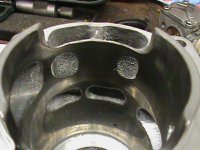I want to share my thoughts on something that. We hear about a lot. I don't have an answer but I will share my thoughts and observations.
I think husky design the bottom to be of variable volume at the right time. We all know when the piston is at tdc it opens the sides to the upper transfers. This means at tdc. The middle of the wrist pin and slab side increase case volume at a theoretical peak intake flow. (Intake is most open).
When the piston travels down. The intake closes then the sides of the piston are closed off just before the transfers open. The Base is now of a smaller volume because the piston travel down and the sides are sealed.
If we raise the lower walls this is defeated
Like Randy says the engineers are not stupid.
Hope the pics help.
I think husky design the bottom to be of variable volume at the right time. We all know when the piston is at tdc it opens the sides to the upper transfers. This means at tdc. The middle of the wrist pin and slab side increase case volume at a theoretical peak intake flow. (Intake is most open).
When the piston travels down. The intake closes then the sides of the piston are closed off just before the transfers open. The Base is now of a smaller volume because the piston travel down and the sides are sealed.
If we raise the lower walls this is defeated
Like Randy says the engineers are not stupid.
Hope the pics help.
Attachments
Last edited:






